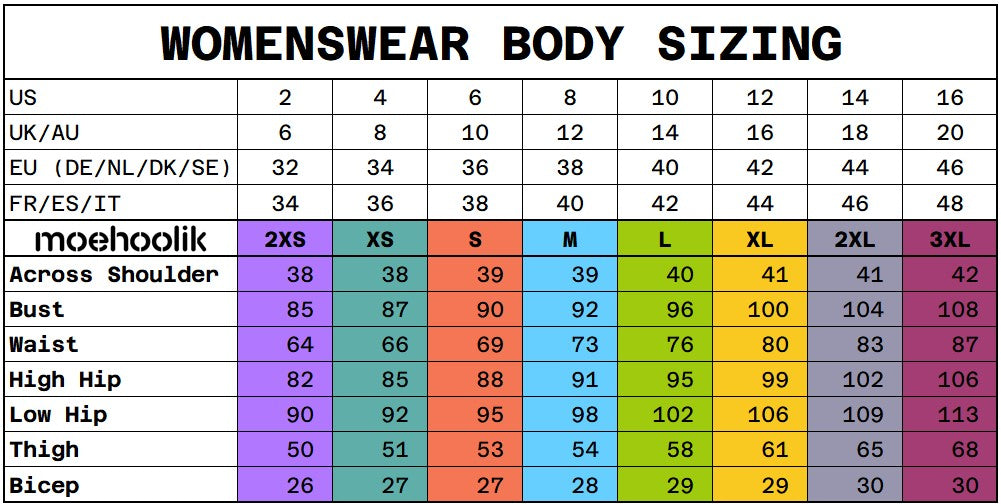How to find the size which fits you?
-

Measure Yourself
Use a measuring tape to take your body measurements. Focus on key areas like bust, waist, and hips to ensure an accurate fit.
-

Compare to Our Size Guide
Match your measurements to the detailed size guide provided on this page. Our guide is tailored to help you find the right size effortlessly.
-

Check Product Descriptions
Each item includes individual product measurements. Keep the garment's fit in mind—tight items measure smaller, loose or outerwear pieces measure bigger. When in doubt, compare the product measurements to similar clothes you own.
Why We Don’t Use Original Size Labels
At Moehoolik, we prioritize accuracy and transparency when it comes to sizing. Here’s why we don’t rely on the original size labels found on garments:
- Changes Over Time: Used garments may shrink, stretch, or otherwise change in size due to wear, washing, and age, making the original size label unreliable.
- Different Brand Standards: Brands often have their own unique sizing systems, meaning a size “M” in one brand may not match a size “M” in another.
- Vintage Pieces: Many vintage items either lack size labels or follow sizing conventions that are no longer in use today, which can create confusion.
- Regional Differences: Sizing labels differ across regions—what’s considered a size “10” in one country might align with a size “6” or “38” in another.
By focusing on providing detailed individual product measurements, we ensure you have the most accurate information to select the perfect fit, no matter the garment's origin or history. This approach is part of our commitment to making secondhand shopping seamless and satisfying for you.

Women's Size Guide
Finding the right size for women's clothing involves focusing on key measurements:
- Blouses, Tops, and Dresses: Measure your bust at its fullest point for a comfortable and flattering fit.
- Trousers and Skirts: Pay close attention to the waist and hip measurements. Keep in mind that a trouser's waistband is often positioned below the natural waist. Always check the product measurements, especially the rise height (distance from the crotch to the waistband), to determine if the waistband will be a good fit for you. Measure your hips at their widest point for the best fit in this area.
- Outerwear: For jackets and coats, use your bust measurement and consider room for layering.
Remember, no one’s body is “perfect,” and our charts reflect universal average proportions. It’s normal to have different sizes for tops and bottoms. Combine these guidelines with the product details to find your ideal fit.

Men's Size Guide
To find the right size for men’s clothing, focus on these key areas:
- Shirts and Jackets: Measure your chest at its widest point to ensure a good fit across the shoulders and torso.
- Trousers and Shorts: Focus on the waist and inseam measurements. Note that the trouser waistband is not always positioned at the natural waist. Check the product measurements, especially the rise height (distance from the crotch to the waistband), to confirm if the waistband will sit comfortably for you. Measure your inseam from the crotch to the ankle for the correct length.
- Outerwear: For coats and jackets, use your chest measurement and allow for layering.





